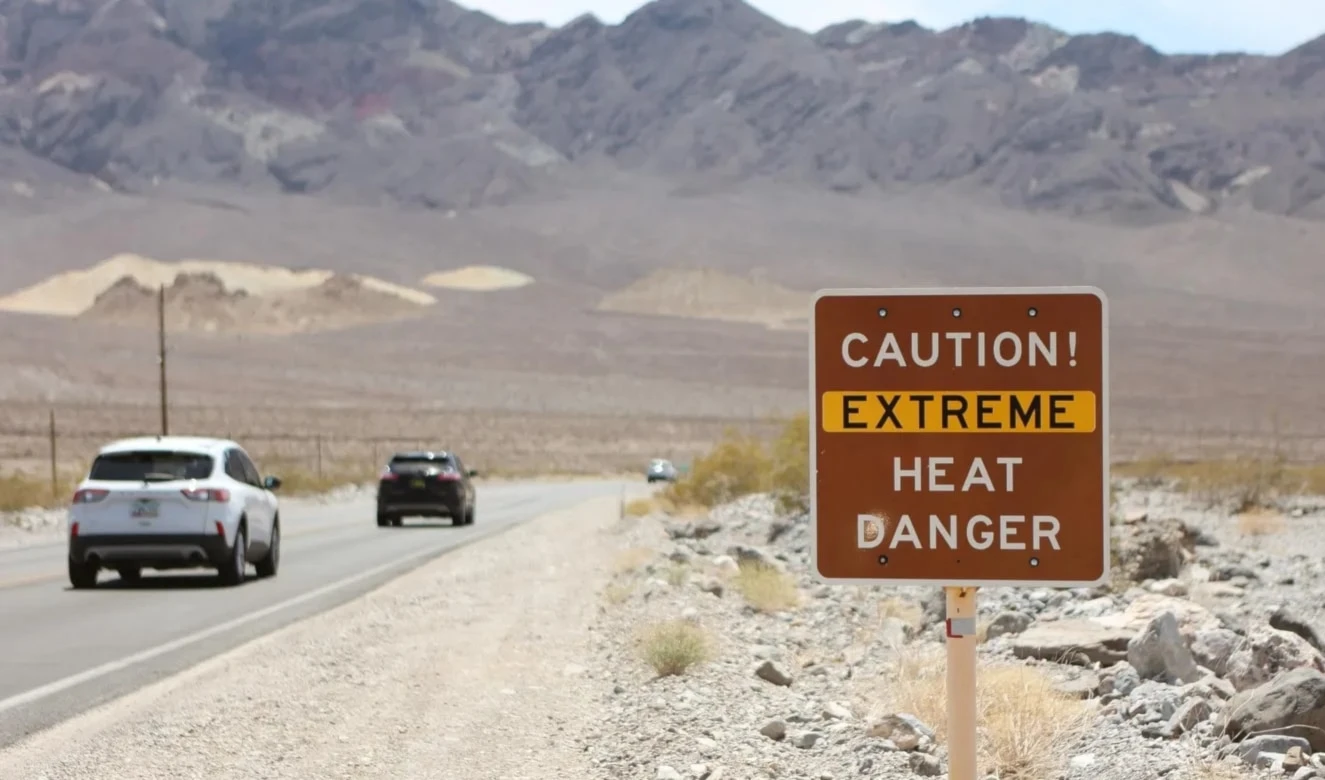Nordic nations scorched by record-breaking heatwave
Northern Europe is facing an unprecedented heatwave, with Arctic regions enduring record-breaking temperatures.
-

An Icelandic horse is sprayed with water at a stud farm in Wehrheim near Frankfurt, Germany, on a hot Saturday, July 8, 2023 (AP)
Traditionally cold Nordic countries are enduring an extreme and prolonged heatwave, with scientists warning that this kind of searing weather, intensified by carbon emissions, could become the new normal for northern Europe.
In Norway’s Arctic Circle, temperatures soared past 30°C (86°F) on 13 separate days this July, an alarming pattern mirrored in Finland, where the mercury stayed above 30°C for three consecutive weeks. Researchers say the ongoing heat streak is the longest on record since 1961, surpassing the previous one by at least 50%.
“Truly unprecedented heatwave still in full swing with maximum today about 32-33C,” wrote Finnish climate scientist Mika Rantanen of the Finnish Meteorological Institute on social media. “Even the Arctic regions … have seen three weeks above 25C, and may rival tomorrow their August heat records.”
Heat persists across the North
According to Norway’s Meteorological Institute, at least one weather station in the country’s three northernmost counties recorded temperatures above 30°C on 12 different days in July. A temporary cooldown last week gave brief relief, but the heat has since returned and may peak again over the weekend.
“We have some hot days ahead of us in northern Norway,” the agency warned.
In Sweden, the story is much the same. Meteorologists there report prolonged heatwaves at several northern weather stations. Haparanda, for instance, experienced 14 straight days above 25°C, while Jokkmokk in Lappland endured a 15-day heatwave, the longest stretch recorded in over a century, according to Sverker Hellström from the Swedish Meteorological and Hydrological Institute.
Extreme weather stretches infrastructure and ecosystems
Northern Europe’s heatwave, which began in mid-July, has been fueled by unusually warm waters off Norway’s coast and a persistent high-pressure system. Temperatures have spiked 8–10°C above seasonal norms, triggering storms, lightning, and wildfires across the region.
The sweltering conditions have tested infrastructure and healthcare systems in countries unaccustomed to prolonged heat. In Finland, an ice rink was converted into a public cooling center after the local hospital in the north was overwhelmed with heat-related cases, according to Finnish media reports. Meanwhile, herders warned that reindeer populations are at risk of dying from heat stress.
Swedish radio noted that tourists from abroad who sought “coolcations” in the Nordic wilderness were instead met with dangerous heat alerts.
Climate scientists sound the alarm
Experts caution that such extreme weather is no longer a fluke. “As climate change progresses, exceptionally severe heatwaves will intensify,” said Heikki Tuomenvirta, a climate scientist at the Finnish Meteorological Institute.
“They are occurring more frequently, are more severe and last longer,” Tuomenvirta added.
Research shows that countries like the UK, Norway, and Switzerland could experience the most significant increases in the number of extremely hot days, and many lack the infrastructure to cope with such rising temperatures.

 3 Min Read
3 Min Read











